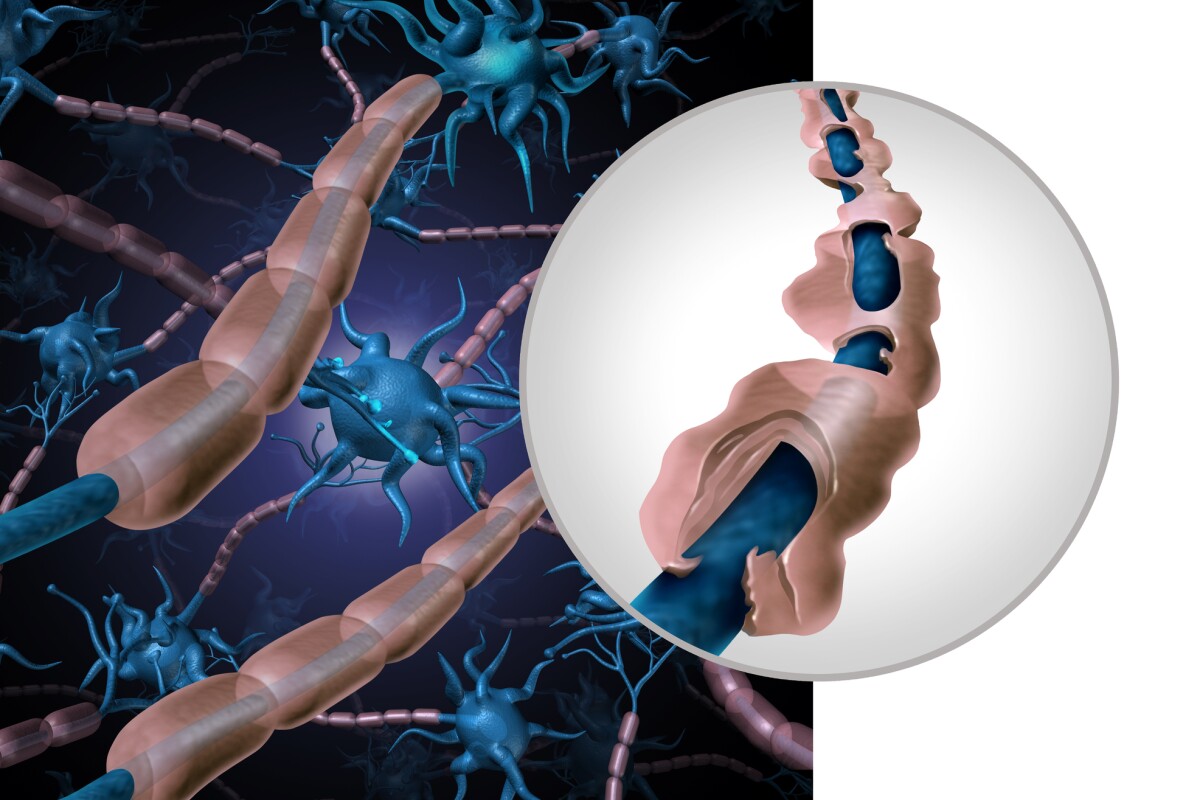
This also applies to all damaged nerves as well. Except by the time you know what is wrong, a lot of damage has been done. This still promises some form of damage reversal.
We need a way to detect the problem as soon as possible.
At least progress is been made even if it will never be a cure.
.
Remyelinating drug could help restore lost vision in MS patients
February 02, 2021
Multiple sclerosis (MS) destroys the protective myelin sheath that insulates nerves – and a new drug may help repair it
https://newatlas.com/medical/remyelinating-drug-lost-vision-multiple-sclerosis/
One common symptom of multiple sclerosis (MS) is vision impairment, and it can progress to blindness in some cases. Now, researchers at the University of California, Riverside (UCR) report a drug that was able to reverse that vision loss in mice.
MS is an autoimmune disease characterized by destruction of myelin, the protective insulation wrapped around nerves. Over time that damage affects the ability of nerves to send messages, resulting in symptoms like muscle weakness, spasms, or difficulty with motor control or balance.
One of the affected nerves is the optic nerve, which carries visual information from the eyes to the brain. That can blur or impair a patient’s vision or, if progression continues, even render them completely blind.
In the new study, the UCR researchers investigated how to prevent that deterioration, using a drug called indazole chloride (IndCl). Previous work by the team showed that IndCl can remyelinate damaged axons, so this time they studied its effects on the optic nerve, and whether that could help restore lost vision.
“IndCl has been previously shown in mice to reduce motor disability, increase myelination, and neuroprotection in the spinal cord and corpus callosum,” says Seema Tiwari-Woodruff, lead author of the study. “Its effects in the visual system, however, were not evaluated until now. Our study shows the optic nerve and optic tract, which undergo significant inflammation, demyelination, and axonal damage, are able to restore some function with IndCl treatment with successful attenuation in inflammation and an increase in remyelination.”
The team tested the drug in a mouse model of MS. The disease progressed for 60 days, and at the peak – after 15 to 21 days – the researchers gave the IndCl drug to half of the mice. And sure enough, the mice that received the drug had some myelin restored, which in turn improved their visual function by around 50 percent. Interestingly, the researchers say that the results could be even more drastic if the treatment is administered earlier in the disease.
“We treated the MS mice with IndCl at peak disease,” says Tiwari-Woodruff. “If the brain is highly diseased, some of the axons that could potentially restore visual function are too damaged and will not recover. There’s a point of no return. Our paper stresses that to acquire vision improvement, treatment must start early. Early treatment can recover 75 percent to 80 percent of the original function.”
Of course, this study was conducted in mice, so there’s no guarantee that the results will carry across to humans. Before that can be tested, the researchers say that they need to investigate exactly how IndCl works to induce remyelination, and which other drugs might work the same way.
The research was published in the journal Brain Pathology.
No comments:
Post a Comment